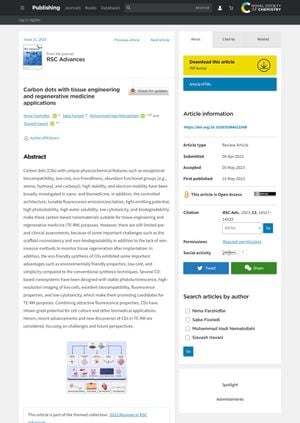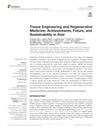Carbon Dots With Tissue Engineering and Regenerative Medicine Applications
January 2023
in “
RSC Advances
”

TLDR Carbon dots show promise for tissue repair and growth but need more research to solve current challenges.
The document discusses the potential of Carbon dots (CDs), a type of nanomaterial, in tissue engineering and regenerative medicine (TE-RM). CDs have unique properties such as biocompatibility, low cost, eco-friendliness, high stability, and electron mobility. They also have tunable fluorescence emission/excitation, light-emitting potential, high photostability, high water solubility, low cytotoxicity, and biodegradability. CDs can be synthesized from green resources, which are environmentally friendly, low cost, and simple compared to conventional synthesis techniques. CDs have been used in various studies for applications such as cell proliferation, tissue regeneration, and angiogenic therapy. However, there are challenges such as scaffold inconsistency, non-biodegradability, and the lack of non-invasive methods to monitor tissue regeneration after implantation. The document concludes that CDs are promising candidates for TE-RM, but more research is needed to overcome the challenges and fully realize their potential.
